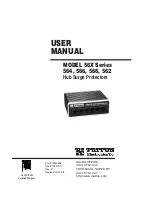
ometimes I think that every position on a
moviemaking crew comes with its special privi-
leges, its perks, as it were. If you’re the script super-
visor, you stand right next to the director as the film
is shot, noting which takes are to be printed and any
remarks the director may have about them. From
this position you watch the script come to life
before the camera. If you’re the director of photography or
the production designer, you play large, determining roles in
how the film will look. The actors literally give a flesh and
blood reality to characters whose only previous existence is
on paper. The writer, of course, has written the screenplay; if
it’s an original screenplay, then he has invented the story. The
most important position of all, it goes without saying, is that
of the director, who realizes the story before the cameras and
oversees every aspect of preproduction, production, and post-
production.
It is the special privilege of the editor that he or she is the
person who first gets to see the movie
as
a movie. Before it
passes through his hands, it is only a collection of long takes
from various angles, of various sizes, without dramatic shape
or rhythm. Having said that, I wouldn’t
want to suggest that the editor alone
gives it shape and rhythm. The screenplay has a structure, as
does each scene; and in most of the scenes, the director has
built tempo or range of tempos. But these things have no real
cinematic existence until they leave the editor’s bench. One of
the most continually exciting and personally rewarding
aspects of an always interesting job is that first time I run a
scene after I’ve cut it. Suddenly, as if by magic, I’m looking at
a real movie where there was none before, or at least the
beginnings of a movie.
Outsiders are sometimes surprised to learn that most
movies are shot out of sequence and that editing begins the
moment there is a complete scene to cut, which is to say with
the first day of shooting. It makes no sense to wait – you can
cut just one scene at a time anyhow. And it would be bad eco-
nomics to let the interest on the loans increase while the
footage just piles up. What directors want and need is to have
a first cut finished as soon as possible after the completion of
principal photography. As it usually takes longer to edit a
scene than it does to film it, cutting must begin immediately.
Editing as you go along gives everyone involved the
opportunity to assess how the project is shaping up – are the
performances working, as the scenes
accumulate do they tell a story, does
J O U R N A L
N
O
T
E
S F
R
O
M
T
H
E C
U
T
T
I
N
G
W h a t d o e s a f i l m e d i t o r d o ?
A n d w h a t e f f e c t d o e s t h i s h a v e o n t h e f i n a l v e r s i o n
P A U L S E Y D O R
















































